Archived Mold Remediation Blog Posts
“Mold Removal” vs. Remediation for Residents of Kenton, Bellefontaine, Ada and Marysville,OH
4/5/2018 (Permalink)
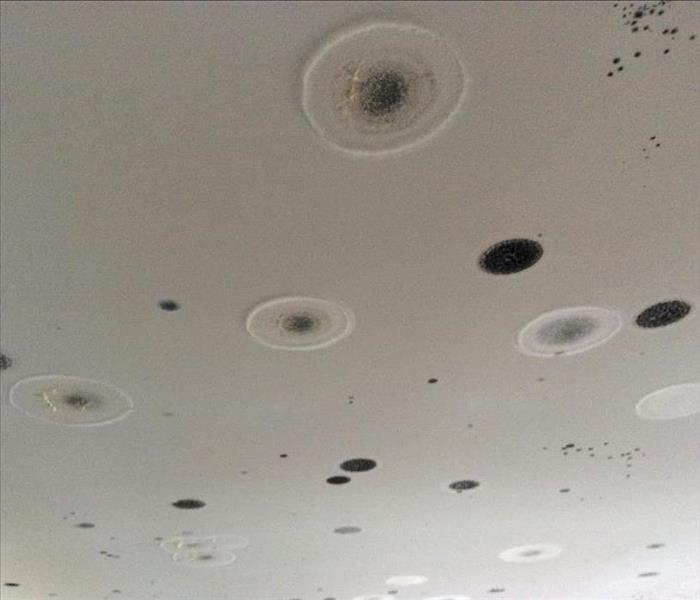 Mold
Mold
What’s the Difference?
Since microscopic mold spores exist naturally almost everywhere, indoors and outdoors, removing all mold from a home or business is impossible. Some restoration businesses advertise “mold removal” and even guarantee to remove all mold. This is a fallacy.
A qualified restoration company understands the science behind mold and mold growth. SERVPRO Franchise Professionals have the training and expertise to remediate the mold in your home or business. Mold remediation focuses on getting mold levels back to normal, natural levels.
Every mold damage scenario is different and requires a unique solution, but the general mold remediation process stays the same. To learn more about our mold remediation process.
- Step 1: Emergency Contact 1-800-SERVPRO
- Step 2: Inspection and Mold Damage Assessment
- Step 3: Mold Containment
- Step 4: Air Filtration
- Step 5: Removing Mold and Mold-Infested Materials
- Step 6: Cleaning Contents and Belongings
- Step 7: Restoration
Signs of Mold? Call Today (937)354-3540
Understanding Mold Basics in Your Local Kenton, Ada, Bellefontaine and Marysville,OH areas
4/5/2018 (Permalink)
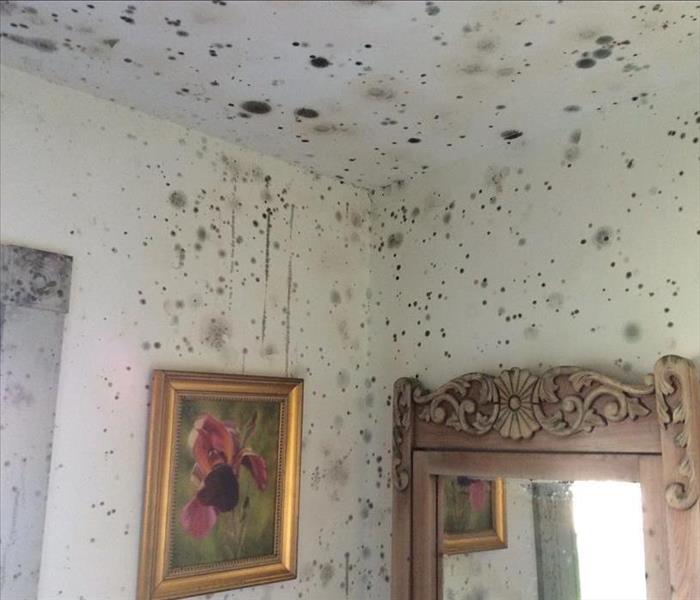 Understanding Mold
Understanding Mold
Understanding Mold
When water intrudes into your property, mold growth can start in as little as 48 hours. Consider the following mold facts:
- Mold is present almost everywhere, indoors and outdoors.
- Mold spores are microscopic, float along in the air, and may enter your home through windows, doors, or AC/heating systems or even hitch a ride indoors on your clothing or a pet.
- Mold spores thrive on moisture. Mold spores can quickly grow into colonies when exposed to water. These colonies may produce allergens and irritants and have the potential to cause other health effects.
- Before mold remediation can begin, any sources of water or moisture must be addressed. Otherwise, the mold may return.
- Mold often produces a strong, musty odor, and that odor can lead you to possible mold problem areas.
- Even higher-than-normal indoor humidity can support mold growth. Keep indoor humidity below 45 percent.
Have any questions and/or concerns about mold damage in your home or commercial buildings in the Kenton, Ada, Bellefontaine and/or Marysville,OH areas? Give us a call at (937)354-3540!
Mold FYI Blog- Hardin, Logan & Auglaize counties
3/30/2018 (Permalink)
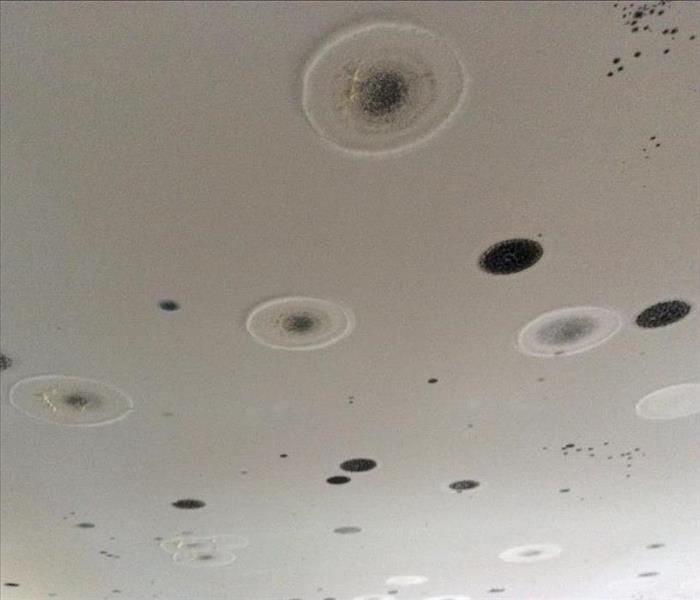 Mold Cultures
Mold Cultures
Common Mold Causes, Growing Conditions
Molds are found everywhere, and can grow on almost any substance when moisture is present. They reproduce by spores, which are carried by air currents. When spores land on a moist surface suitable for life, they begin to grow. Mold is normally found indoors at levels which do not affect most healthy individuals.
Because common building materials are capable of sustaining mold growth and mold spores are ubiquitous, mold growth in an indoor environment is typically related to water or moisture and may be caused by incomplete drying of flooring materials (such as concrete). Flooding, leaky roofs, building-maintenance or indoor-plumbing problems can lead to interior mold growth. Water vapor commonly condenses on surfaces cooler than the moisture-laden air, enabling mold to flourish. This moisture vapor passes through walls and ceilings, typically condensing during the winter in climates with a long heating season. Floors over crawl spaces and basements, without vapor barriers or with dirt floors, are mold-prone. The "doormat test" detects moisture from concrete slabs without a sub-slab vapor barrier. Some materials, such as polished concrete, do not support mold growth.
Significant mold growth requires moisture and food sources and a substrate capable of sustaining growth. Common building materials, such as plywood, drywall, furring strips, carpets, and carpet padding provide food for mold. In carpet, invisible dust and cellulose are food sources. After water damage to a building, mold grows in walls and then becomes dormant until subsequent high humidity; suitable conditions reactivate mold. Mycotoxin levels are higher in buildings which have had a water incident.
Mold FYI Blog #2- Hardin, Logan & Auglaize counties
3/30/2018 (Permalink)
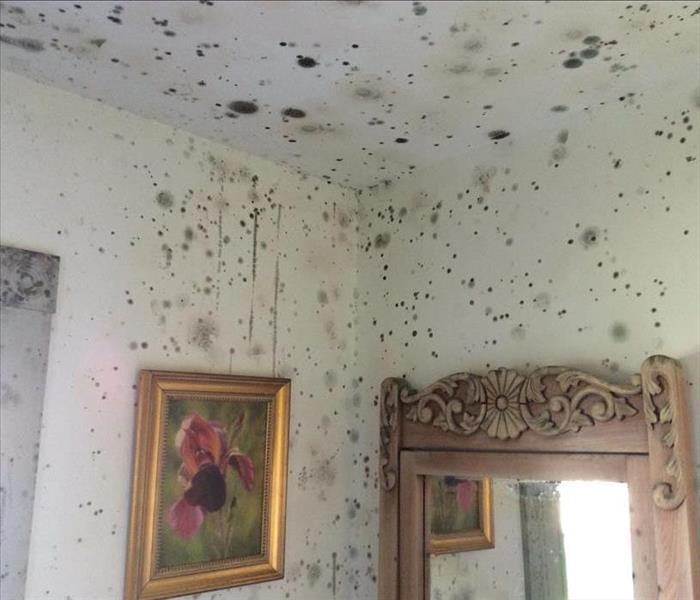 Mold
Mold
Mold is detectable by smell and signs of water damage on walls or ceiling, and can grow in places invisible to the human eye. It may be found behind wallpaper or paneling, on the inside of ceiling tiles, the back of drywall, or the underside of carpets or carpet padding. Piping in walls may also be a source of mold, since they may leak (causing moisture and condensation).
Spores need three things to grow into mold: nutrients - cellulose (the cell wall of green plants) is a common food for indoor spores; moisture - To begin the decaying process caused by mold; time -mold growth begins from 24 hours to 10 days after the provision of growing conditions.
Mold colonies can grow inside buildings, and the chief hazard is the inhalation of mycotoxins. After a flood or major leak, mycotoxin levels are higher even after a building has dried out.
Mold is detectable by smell and signs of water damage on walls or ceiling, and can grow in places invisible to the human eye. It may be found behind wallpaper or paneling, on the inside of ceiling tiles, the back of drywall, or the underside of carpets or carpet padding. Piping in walls may also be a source of mold, since they may leak (causing moisture and condensation).[8]
Spores need three things to grow into mold: nutrients - cellulose (the cell wall of green plants) is a common food for indoor spores; moisture - To begin the decaying process caused by mold; time -mold growth begins from 24 hours to 10 days after the provision of growing conditions.
Mold colonies can grow inside buildings, and the chief hazard is the inhalation of mycotoxins. After a flood or major leak, mycotoxin levels are higher even after a building has dried out.
Food sources for mold in buildings include cellulose-based materials such as wood, cardboard and the paper facing on drywall and organic matter such as soap, fabrics and dust-containing skin cells. If a house has mold, the moisture may originate in the basement or crawl space, a leaking roof or a leak in plumbing pipes. Insufficient ventilation may accelerate moisture buildup. Visible mold colonies may form where ventilation is poorest and on perimeter walls (because they are nearest the dew point).
Mold FYI Blog #3- Hardin, Logan & Auglaize counties
3/30/2018 (Permalink)
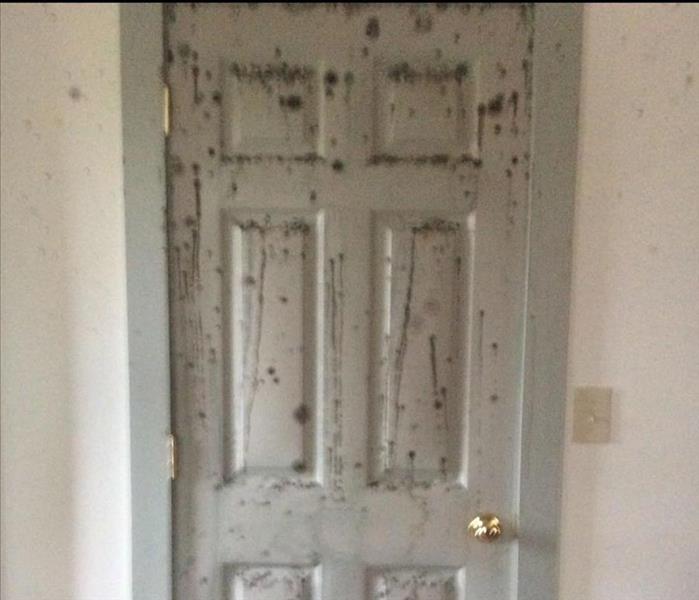 Mold
Mold
If there are mold problems in a house only during certain times of the year, the house is probably too airtight or too drafty. Mold problems occur in airtight homes more frequently in the warmer months (when humidity is high inside the house, and moisture is trapped), and occur in drafty homes more frequently in the colder months (when warm air escapes from the living area and condenses).
If a house is artificially humidified during the winter, this can create conditions favorable to mold. Moving air may prevent mold from growing, since it has the same desiccating effect as low humidity. Molds grow best in warm temperatures, 77 to 86 °F (25 to 30 °C), although growth may occur between 32 and 95 °F (0 and 35 °C).
Removing one of the three requirements for mold reduces (or eliminates) new mold growth: moisture; food for the mold spores (for example, dust or dander); and warmth since mold generally does not grow in cold environments.
HVAC systems can produce all three requirements for mold growth. The air conditioning system creates a difference in temperature, encouraging condensation.
The high rate of dusty air movement through an HVAC system may furnish ample food for mold. Since the air-conditioning system is not always running, warm conditions are the final component for mold growth.




 24/7 Emergency Service
24/7 Emergency Service